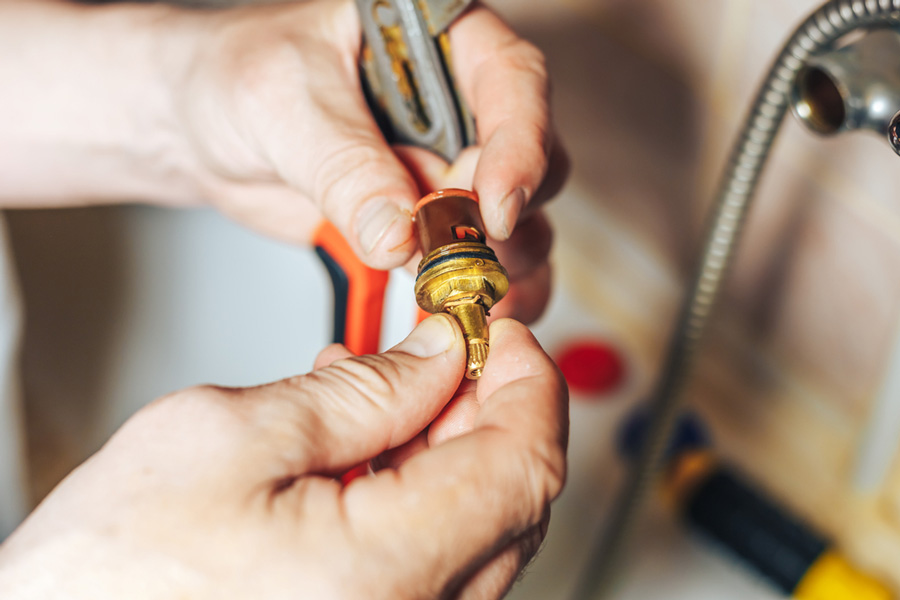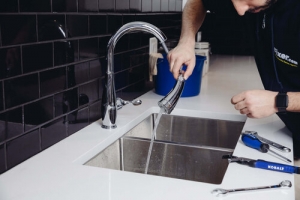What It's Important to Mend a Dripping Faucet
What It's Important to Mend a Dripping Faucet
Blog Article
Just how do you feel when it comes to What Causes Leaky Faucets & How To Fix Them?

Dripping faucets could feel like a minor aggravation, but their influence goes beyond just the annoyance of the noise. From wasting water to incurring unnecessary economic costs and health threats, neglecting a trickling faucet can lead to various effects. In this write-up, we'll look into why it's critical to resolve this common family problem without delay and successfully.
Wastage of Water
Environmental Impact
Dripping faucets add dramatically to water wastefulness. According to the Environmental Protection Agency (EPA), a solitary tap dripping at one drip per secondly can throw away more than 3,000 gallons of water each year. This not just pressures water resources yet additionally affects ecological communities and wildlife dependent on them.
Financial Expenses
Raised Water Bills
Beyond the ecological influence, dripping faucets can pump up water expenses considerably. The accumulated wastage over time converts right into greater energy expenditures, which can have been avoided with prompt repair services.
Possible Residential Or Commercial Property Damages
Additionally, prolonged dripping can cause damage to fixtures and surface areas bordering the faucet. Water accumulation can cause discoloration, rust, and even architectural problems if left ignored, resulting in additional repair prices.
Wellness Issues
Mold And Mildew and Mildew Development
The continuous presence of wetness from a dripping faucet develops an excellent environment for mold and mildew and mold growth. These fungi not only jeopardize interior air high quality but additionally present wellness dangers, specifically for people with breathing conditions or allergic reactions.
Waterborne Conditions
Stationary water in trickling faucets can end up being a breeding place for germs and other microorganisms, enhancing the danger of waterborne illness. Contaminants such as Legionella bacteria thrive in stationary water, possibly causing major diseases when ingested or inhaled.
Do it yourself vs. Expert Repair work
Advantages and disadvantages of DIY Fixing
While some may try to take care of a dripping tap themselves, DIY fixings feature their own collection of challenges. Without correct knowledge and devices, do it yourself attempts can aggravate the issue or cause insufficient repairs, extending the issue.
Advantages of Working With a Professional Plumber
Employing a specialist plumber ensures that the underlying reason for the leaking tap is resolved effectively. Plumbing technicians possess the know-how and tools to identify and fix faucet issues effectively, conserving time and decreasing the risk of further damage.
Step-by-Step Overview to Dealing With a Dripping Faucet
Tools Called for
Prior to attempting to fix a dripping faucet, gather the necessary tools, including an adjustable wrench, screwdrivers, replacement parts (such as washing machines or cartridges), and plumber's tape.
Usual Faucet Issues and Their Solutions
Determine the kind of faucet and the particular concern creating the drip. Common problems consist of damaged washers, corroded shutoff seats, or damaged O-rings. Refer to producer instructions or on-line tutorials for detailed advice on repair work.
Preventive Measures
Regular Maintenance Tips
To avoid leaking taps, do regular maintenance such as cleaning up aerators, examining for leakages, and replacing worn-out components immediately. In addition, consider setting up water-saving tools or upgrading to much more effective components.
Importance of Prompt Repair Works
Dealing with leaking taps as quickly as they're seen prevents further water waste and possible damages, inevitably saving both water and cash in the long run.
Impact on Building Worth
Assumption of Well-Maintained Property
Maintaining a residential or commercial property in good condition, including addressing upkeep issues like trickling taps, enhances its regarded worth and charm among potential purchasers or tenants.
Impact on Resale Worth
Characteristics with properly maintained plumbing fixtures, consisting of taps, command higher resale worths in the real estate market. Resolving trickling faucets can contribute to a favorable perception throughout residential property assessments and negotiations.
Environmental Responsibility
Individual Payment to Conservation
Taking duty for repairing trickling faucets lines up with wider efforts towards water preservation and environmental sustainability. Every individual's actions jointly make a considerable impact on preserving priceless resources.
Sustainable Living Practices
By prioritizing timely fixings and embracing water-saving behaviors, people add to lasting living practices that benefit both existing and future generations.
Verdict
Dealing with a trickling tap surpasses plain convenience; it's an essential step toward saving water, minimizing economic expenses, and securing wellness and property. Whether through DIY fixings or specialist aid, doing something about it to repair dripping faucets is a little yet impactful method to advertise responsible stewardship of sources and contribute to a much healthier, a lot more lasting future.
Why Are My Faucets Dripping (And Can I Fix it Myself)?
Causes of a Dripping or Leaking Faucet
Whether you’re hearing drops of water falling and hitting a sink, or noticing water ooze out from the base of the spout, you shouldn’t ignore a dripping or leaking faucet. And, the good news is, sometimes you can fix the problem yourself.
In this article, we’ll review a few common causes of dripping and leaky. We’ll also walk you through some basic ways to find the problem and handle it without calling anyone — and let you know when to call in a pro.
But, no matter what the cause, or whether you can handle it on your own, the sooner you address it, the better.
Each drip may be a tiny amount of water. But, they all add up quickly. According to the U.S. Geological Survey, one faucet losing one drop every 20 seconds — five a minute — wastes around a liter of water every day, and 173 gallons a year.
Add in more than one in your house, and it’s a lot of water to waste. So, we’ll help you get to the bottom of things quickly.
Four Reasons Your Faucet May Be Dripping
Aerator is Damaged or Unseated Valve Seat is Corroded O Ring is Loose or Worn Out Part of the Assembly is Loose Aerator is Damaged or Unseated
If you unscrew the end of your faucet, you’ll find the aerator. It’s the little stem piece with a screen on it that shuts off the water circulation.
If it’s damaged, or if it’s not sitting right, it will allow water to pass through.
Valve Seat is Corroded
Next is the valve seat, which is connected to the washer. If the washer wasn’t in place correctly, then it could have ground against the seat. Over time, this damages the valve seat.
The problem could also be corrosion: Over time, the part has worn out, and it’s now allowing water to pass through.
O Ring is Loose or Worn Out
Since the o ring is only a small rubber gasket, it’s a common reason why the faucet is dripping. You’ll find it at the base of the faucet, and it’s there to keep water from coming out where it’s not supposed to.
However, it’s common for the o ring to wear out over time. When it does, you’ll notice a drip.
Part of the Assembly is Loose
So far, we’ve looked at a few small, specific parts. But, the problem could be anywhere in the assembly if something’s out of place.
Even if a part isn’t damaged, over time, it may have become loose or dislodged. It could be the parts we mentioned, or the aerator at the tip of the faucet, the stem itself,
Can I Fix a Leaky Faucet Myself?
Depending on the problem, and how handy you are, there’s a chance you can fix a leaky faucet without calling a professional. But, you do run the risk of making the problem worse.
If it’s a small drip, you can certainly try a few troubleshooting tactics. We’ll walk you through them in a moment.
But, no matter what, your first step should be shutting off the water coming into the faucet. You should find a shutoff valve under the sink on the pipes leading to it. Turn each one clockwise until they close tightly.
Next, make sure you have the right tools for whatever you’re attempting. It’s tempting to make do with what you have. But, you need the right ones for a reason: You’re often dealing with small parts that can break if you handle them carelessly.
If you’re feeling confident, here are some places to start.
Items Near the Tip of the Faucet
A few of the parts we mentioned — particularly the valve seat and washer — are located at the tip of the faucet where the water comes out. They’re easy to access, making it a good place to start.
Check the O Ring
To check the o ring, you’ll need to take off the spout at the base. It’s easiest on kitchen sinks with long spouts, versus the smaller, bulkier base on most bathroom sinks.
Either way, this can be tricky, so do it carefully and don’t force anything. If it’s not coming right off, you’re much better off calling in a pro than possibly breaking something.
For a kitchen sink, there’s usually a nut or coupling assembly at the base of the spout. These often slide off easily without using any tools.
Once you’ve disassembled those parts, gently but forcefully twist off the spout.
Then, you can see the o rings. There should be two of the rubber gaskets on the base. If they look worn or damaged, replace them, and see if that solves the problem.

I came across that entry about Water Dripping from Faucet: Why and How to Fix when doing a lookup on the web. So long as you appreciated our post kindly don't forget to pass it around. Thank you for taking the time to read it.
Report this page